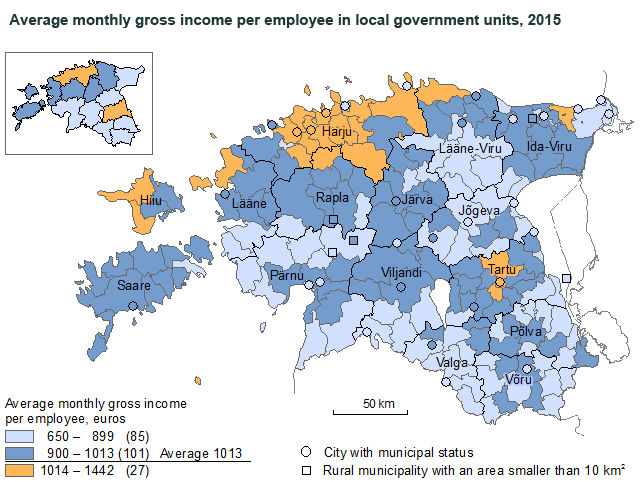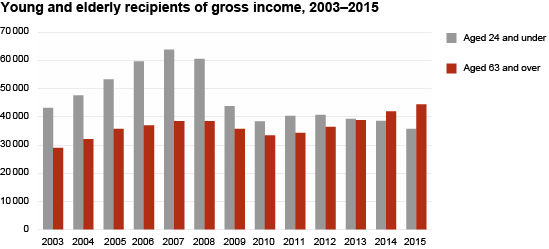Analytics, Estonia, Financial Services, Markets and Companies, Wages
International Internet Magazine. Baltic States news & analytics
Wednesday, 14.01.2026, 00:15
In 2015, the average monthly gross income in Estonia exceeded 1,000 euros for the first time
 Print version
Print version
In 2015 compared to the previous year, the increase in gross income was fastest in Jõgeva, Lääne, Viljandi, Võru and Põlva county (7% increase). In other counties, gross income increased 6%, except for in Ida-Viru county where the increase was 5%.
The average monthly gross income exceeded 900 euros in 8 counties and it exceeded 1,000 euros in Harju, Tartu and Hiiu county. In the other counties, the gross income was lower. In the past years, the gross income has been lowest in two counties: Ida-Viru (in 2004–2009) and Valga county (2010–2014). In 2015, the lowest gross income was earned yet again in Ida-Viru county (847 euros).

Among local government units, the average monthly gross income per employee was highest in the rural municipalities of Harju county. For years now, the highest gross income there is earned in Viimsi rural municipality, where the average monthly gross income per employee was 1,442 euros in 2015. In the capital, Tallinn, the monthly gross income in 2015 was nearly 1,100 euros. The gross income was one of the highest also in the rural municipality of Vormsi in Lääne county. On the lower end of the ranking of gross income we find three rural municipalities of Tartu county, where the gross income was below 700 euros per month (the rural municipalities of Piirissaare and Peipsiääre and the city of Kallaste).
In 2015, men earned on average 270 euros per month more than women. Although the gross income of men was higher than that of women, the gross income of women increased more compared to the previous year (7% increase for women, 5% for men). In the past years, the difference between the gross incomes of men and women has started to decrease a little, as the gross income of women has increased faster.
In 2015, the number of persons earning gross income did not increase significantly. There were in total 1,630 additional earners of gross income, making the total of gross income recipients a little over 520,000 persons. In most counties, the number of gross income recipients decreased, except for in Harju, Tartu and Pärnu county. The number of gross income recipients decreased mostly for the population aged 24 and under, which was compensated for by an increase in the number of income recipients among the elderly (aged 63 and over). While a year ago, the number of gross income recipients in the younger age group decreased 2% compared to the previous year, the decrease accelerated in 2015, reaching 7%. The number of income recipients aged 24 and under decreased in all counties, while the relevant number among persons aged 63 and over increased in all counties.

The analysis is based on the data of the Estonian Tax and Customs Board as at 31 March 2016. The average monthly gross income per employee is calculated by dividing the monthly average sum of disbursements with the monthly average number of persons receiving disbursements.








 «The Baltic Course» Is Sold and Stays in Business!
«The Baltic Course» Is Sold and Stays in Business!

